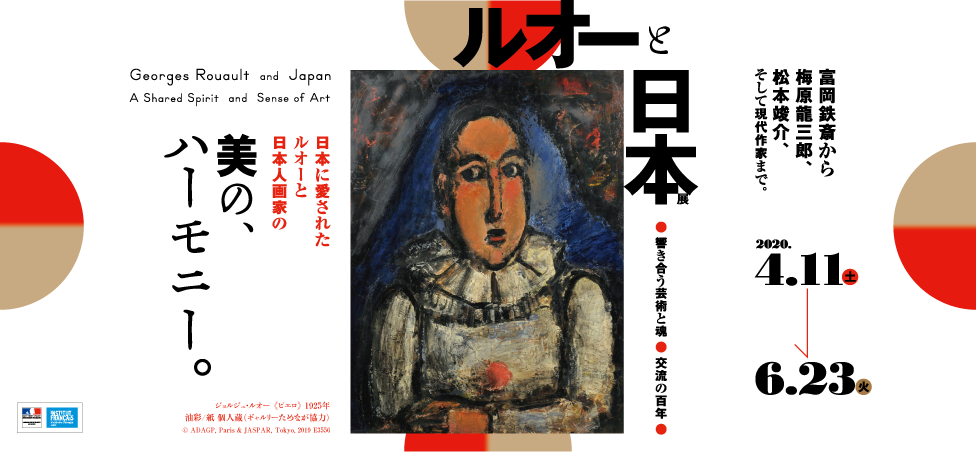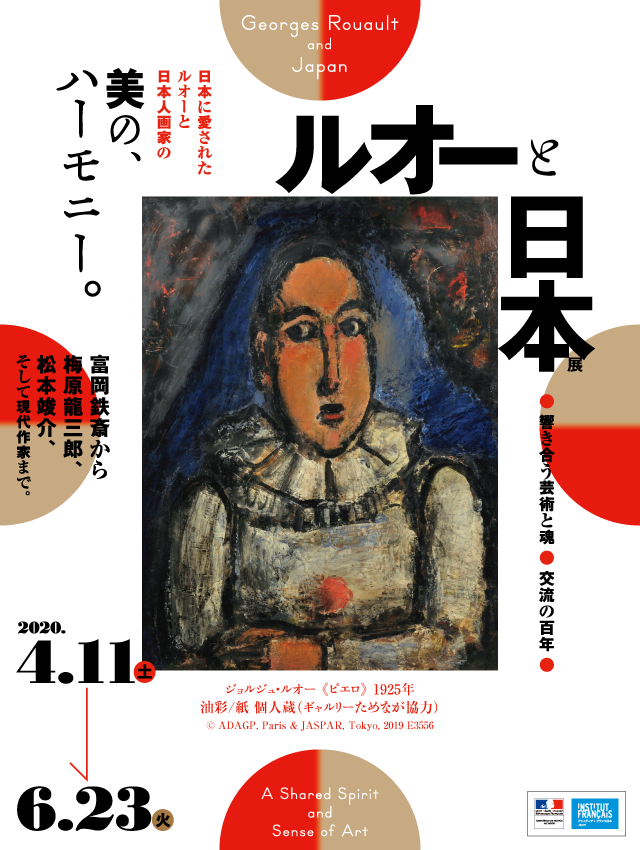Georges Rouault and Japan: A Shared Spirit and Sense of Art


General Information
- Dates
- Apr. 11– Jun. 23, 2020
[To Our Visitors]
We will take measures for preventing the spread of COVID-19 and open from Friday, June 5th.
- Hours
- 10 a.m. – 6 p.m. (Admittance until 5:30 p.m.)
* Open until 8 p.m. (admittance until 7:30 p.m.) on May 8 and Jun. 5
- Closed
- Wednesday
(but open on Wednesday, Apr. 29 and May 6)
(but open on Wednesday, Jun. 10 and 17)
- Admission
- Adults: ¥1000
Visitors aged 65 or over carrying proof of age: ¥900
Students (College): ¥700
Students (High / Middle school): ¥500
Admission is free for children in primary school and younger.
Groups of 20 or more will receive a ¥100 discount per person (not including those aged 65 or over).
Admission is free for disability passbook holders and up to one accompanying adult. Free admission is offered to all visitors on International Museum Day (May 18).
- Organizers
- Panasonic Shiodome Museum of Art, NHK Promotions, The Tokyo Shimbun
- Support
- Embassy of France in Tokyo / Institut français du Japon, Minato City Board of Education

- Cooperation
- Japan Airlines
- Special Cooperation
- Fondation Georges Rouault
Message from Mr. Jean-Yves Rouault, President of the Fondation Georges Rouault
Exhibition overview
A shared sense of color and line
Georges Rouault (1871-1958) was a prominent figure in 20th-century French art. Almost a hundred years ago, in 1921, artist Ryuzaburo Umehara was inspired to purchase Rouault’s painting Nude and bring it home to Japan from Paris. This was the first of many Rouault works to be introduced to Japan, where their powerful lines and radiant visual texture greatly impacted the world of yoga, Western-style Japanese paintings. Rouault himself became friendly with members of Japan’s art world—for example, he visited and even worked on his art at the Parisian home of art collector Shigetaro Fukushima.
The exhibition focuses on Rouault’s colorful relationship with Japan, depicting it through oil paintings, watercolors, and prints by Rouault that have long been admired by Japanese audiences, as well as select works by well-known modern yoga artists such as Umehara, Shunsuke Matsumoto, and Kotaro Migishi. In doing so, the exhibition highlights Rouault’s role in the history of yoga and the uniqueness of Japan’s appraisal of Rouault’s work. The exhibition also includes Suiboku-ga, ink wash painting, by Hakuin Ekaku and Tessai Tomioka, as well as works by Japanese artist one generation removed from Rouault and by contemporary Japanese artists. By observing the similarities in these disparate works, visitors will better understand the universality of Rouault’s art and how it transcends time and form.
The approximately 80 works and related materials from around the world that are presented in this exhibition will allow visitors to discover a new aspect to Rouault’s art that is rooted in Japan.





